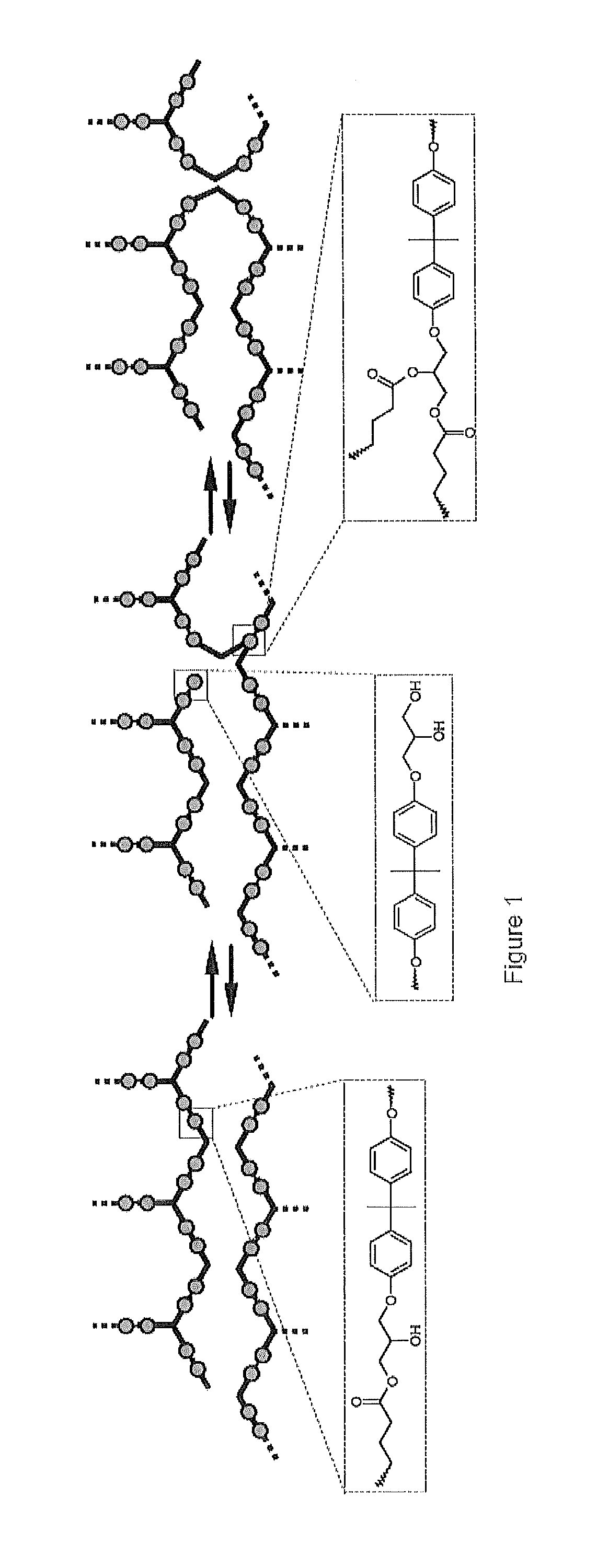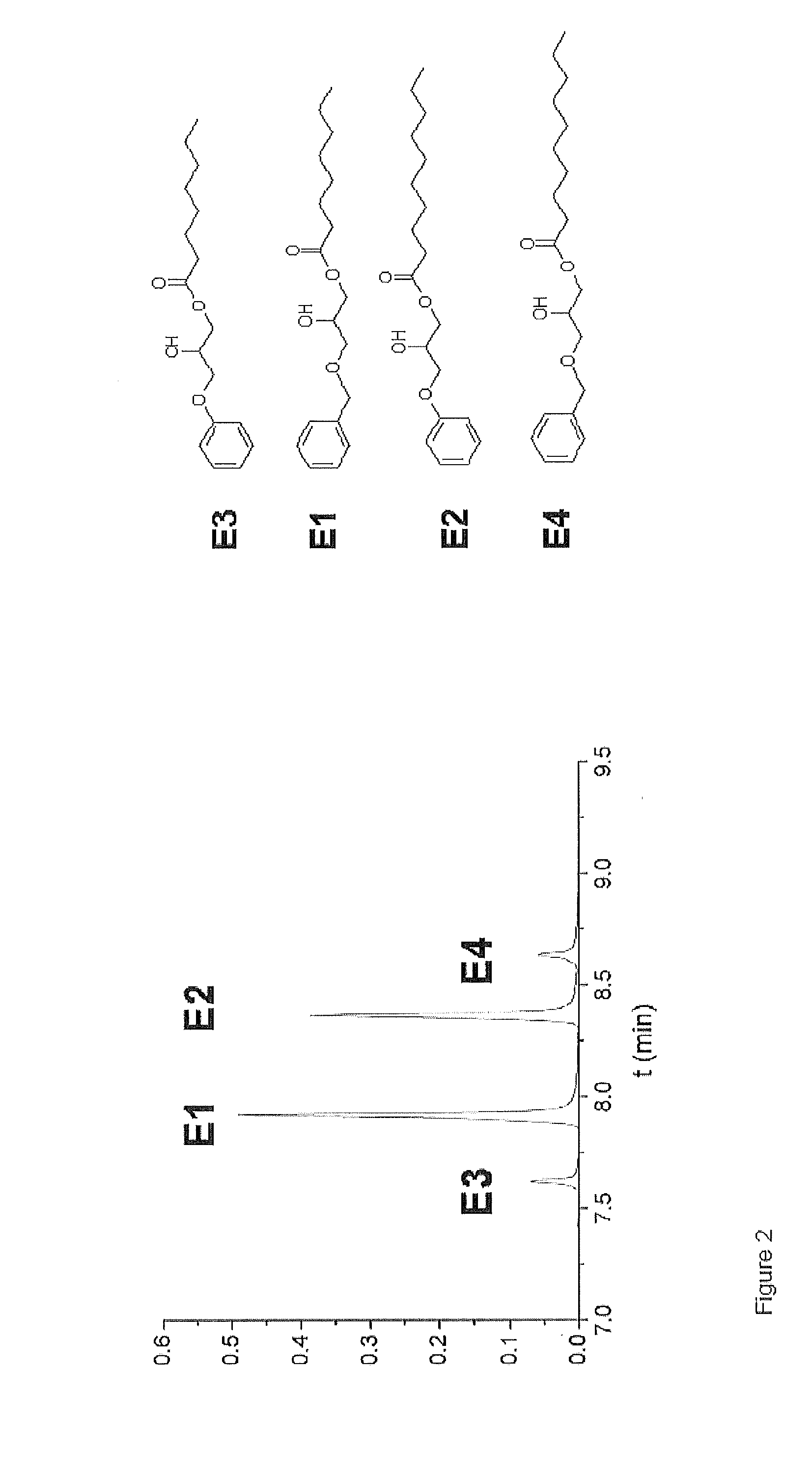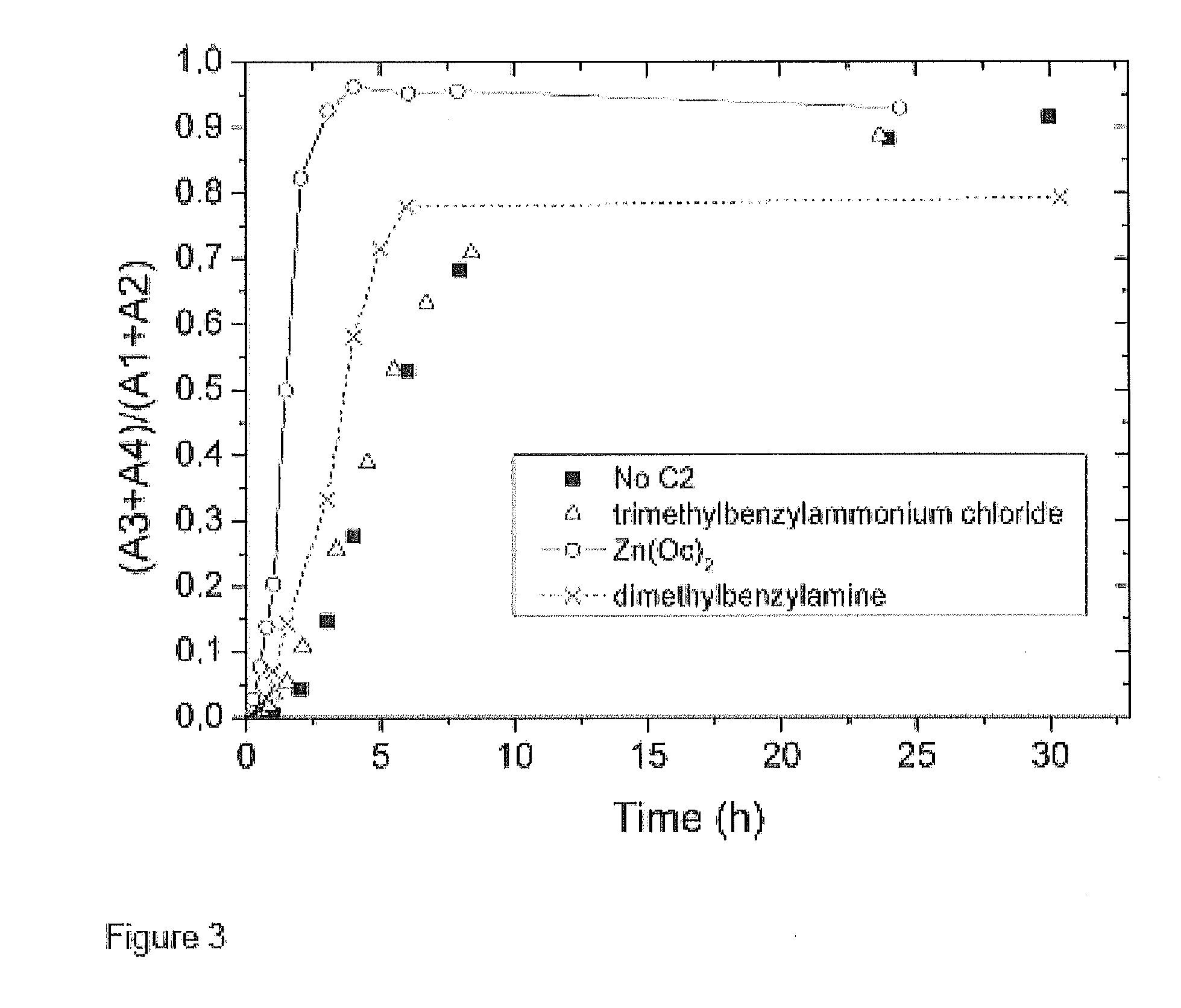Thermoset/supramolecular hybrid composites and resins that can be hot-formed and recycled
- Summary
- Abstract
- Description
- Claims
- Application Information
AI Technical Summary
Benefits of technology
Problems solved by technology
Method used
Image
Examples
— synthesis examples
I—Synthesis Examples
Example 1
Preparation of a Material with Catalyst
[0291]First Step: Reaction of the Acid with UDETA
[0292]196.4 g of Pripol® 1040 [molar mass per COOH 296 g / mol, dimer content (23%), trimer content (77%)] and 27.4 g of UDETA [molar mass per NH2 129.2 g / mol], i.e. an [NH2] / [COOH] molar ratio of 30%, are placed in a reactor. The reaction is carried out with mechanical stirring and nitrogen sweeping (˜320 ml / min) at 150° C. An analysis by IR spectroscopy confirms the decrease in the C=0 band of the acid at 1705 cm−1 and also the appearance of the C=0 band of the amide at 1650 cm−1. The reaction is stopped when these bands no longer change, i.e. after 2 h 30. Analyses by 1H and 13C NMR confirm the complete reaction of the amines.
Second Step: Dissolution of the Catalyst
[0293]82.53 g of the mixture synthesized in step 1 and 1.85 g of zinc acetate dihydrate (8.43 mmol), i.e. a [Zn] / [COOH]remaining molar ratio of 0.05, are placed in a 250 ml round-bottomed flask. The mixtur...
example 2
Comparison of Conventional Hybrid Networks / Hybrid Networks with Catalyst
[0295]Three dumbbell-shaped test specimens with a width of 5 mm, a working length of 25 mm and a thickness of 1.35 mm are cut from a sheet from material synthesized according to example 1, using a hole punch, according to standard ISO 527-3.
[0296]A tensile strength test is performed at ambient temperature with a constant speed of displacement (10 mm / min) on an Instron® 5564 machine. The stress as a function of the strain of the test specimen is recorded.
[0297]One of the stress-strain curves obtained on the “virgin” sample is represented with solid squares in FIG. 4. A stress at break of 1.02 MPa and a strain at break of 270% are then obtained.
[0298]This sample can be partially repaired at ambient temperature: the fractured parts of the test specimen are put back together by applying a small pressure and left to stand at ambient temperature.
[0299]After 10 min (continuous line) or an overnight period (dashed line)...
example 3
Forming of the Chemically Crosslinked Material by Injection-Molding
[0301]The forming by injection-molding is carried out using a DSM injector equipped with a dumbbell-shaped test specimen mold according to standard ISO 527-3.
[0302]Small pieces with a side length of 2-3 mm are cut from a sheet of material synthesized according to example 1, in sufficient amount to pack the mold used (in practice, approximately 5 g), and then placed in the barrel brought to a temperature of 250° C. After a few seconds of temperature establishment, the material is injected into the mold stabilized at the temperature of 200° C. by means of a 16-bar pressure for a total cycle of 30 s. After annealing for 10 min at 200° C., the mold is cooled by circulation of water allowing the temperature to decrease from 200° C. to 20° C. over the course of approximately 5 minutes. The injected test specimen is immediately extracted from the mold; it exhibits neither defect nor shrinkage.
PUM
| Property | Measurement | Unit |
|---|---|---|
| Temperature | aaaaa | aaaaa |
| Temperature | aaaaa | aaaaa |
| Fraction | aaaaa | aaaaa |
Abstract
Description
Claims
Application Information
 Login to View More
Login to View More - R&D
- Intellectual Property
- Life Sciences
- Materials
- Tech Scout
- Unparalleled Data Quality
- Higher Quality Content
- 60% Fewer Hallucinations
Browse by: Latest US Patents, China's latest patents, Technical Efficacy Thesaurus, Application Domain, Technology Topic, Popular Technical Reports.
© 2025 PatSnap. All rights reserved.Legal|Privacy policy|Modern Slavery Act Transparency Statement|Sitemap|About US| Contact US: help@patsnap.com



